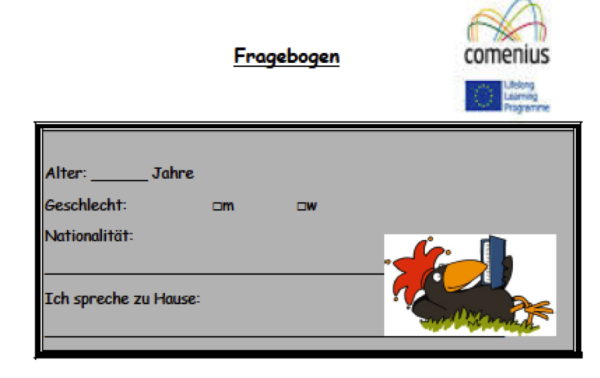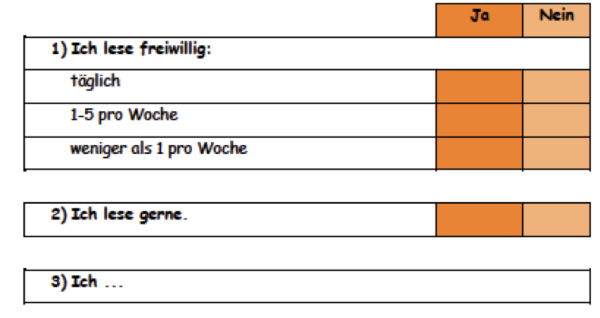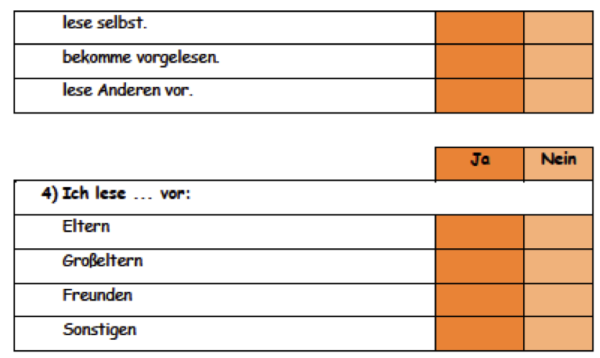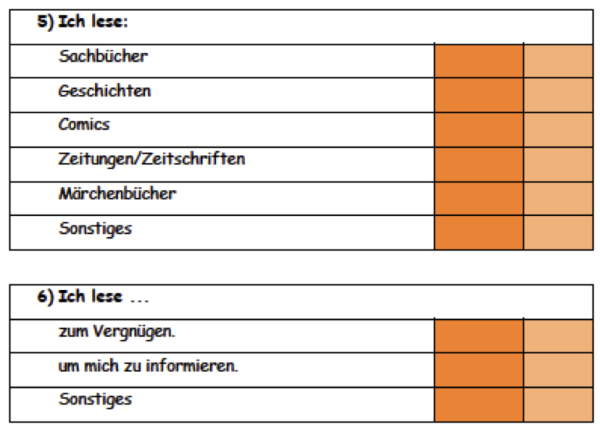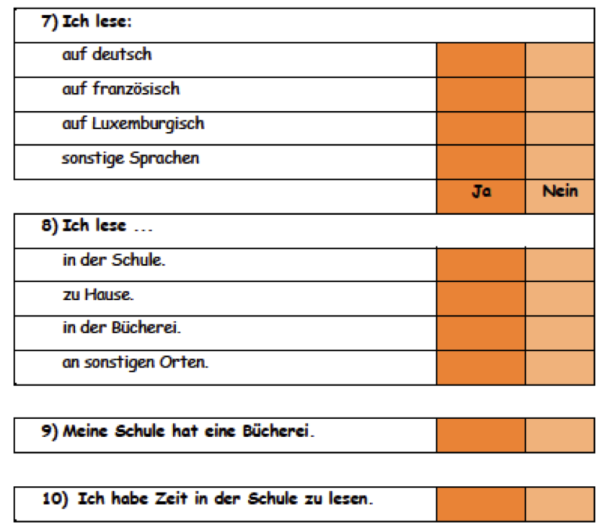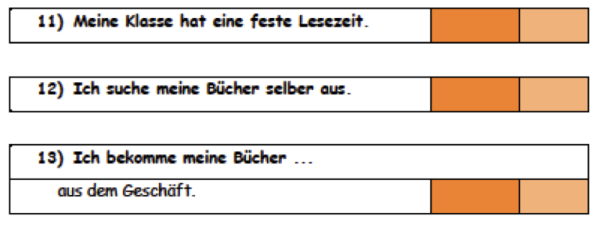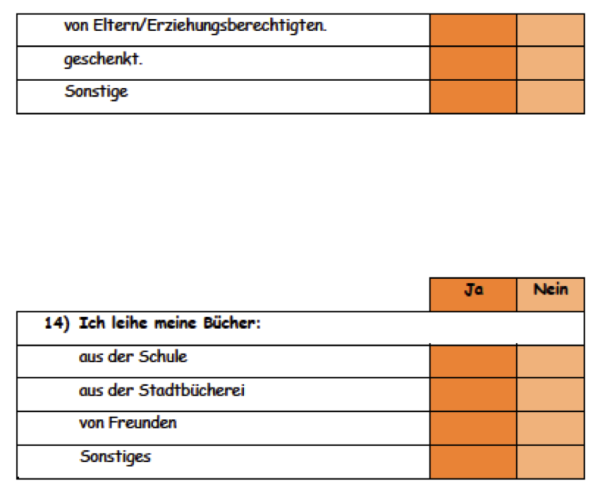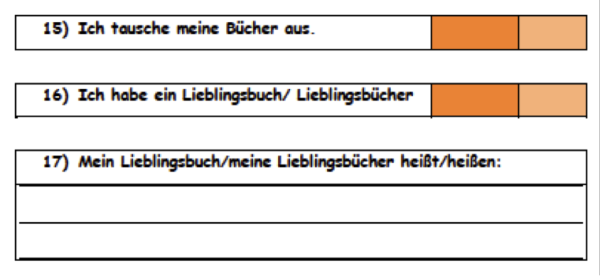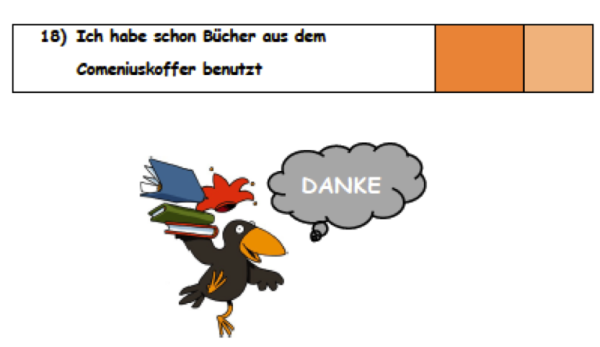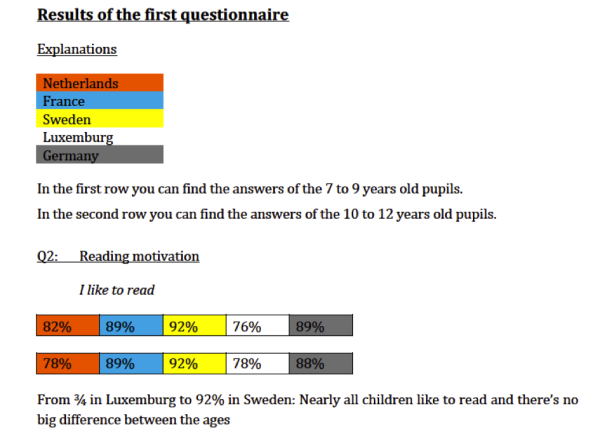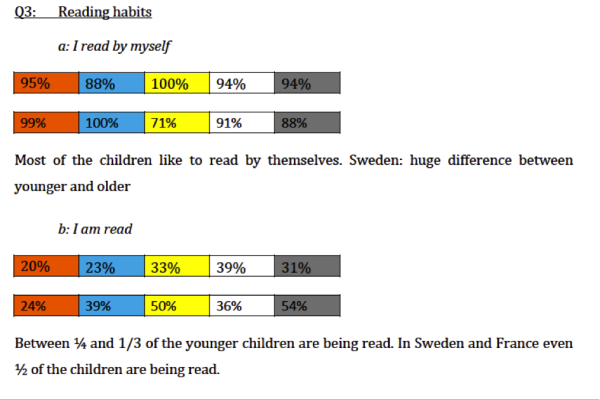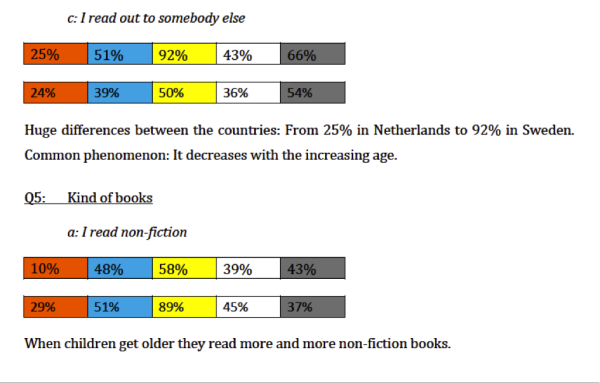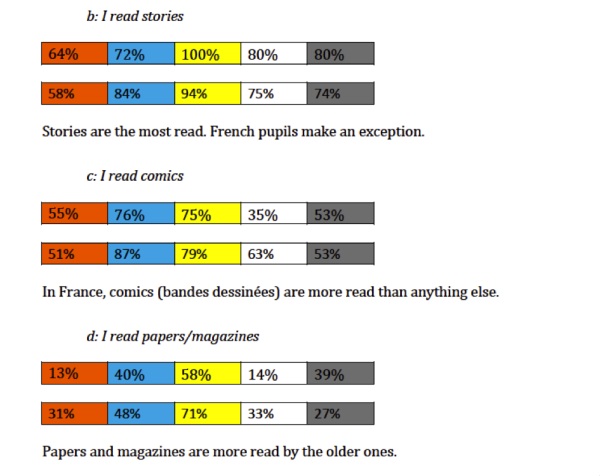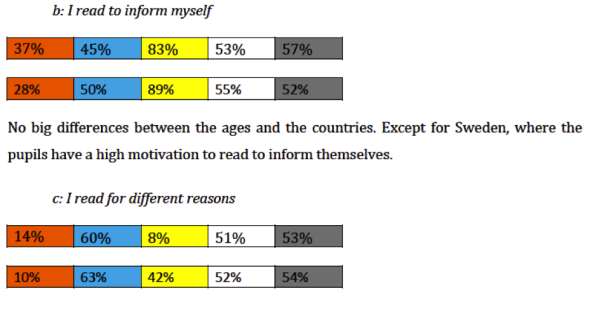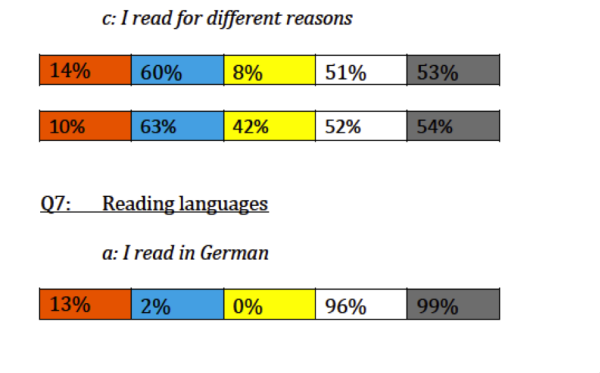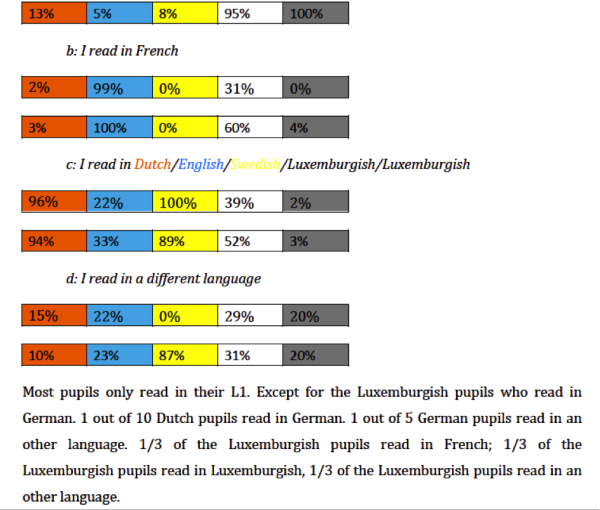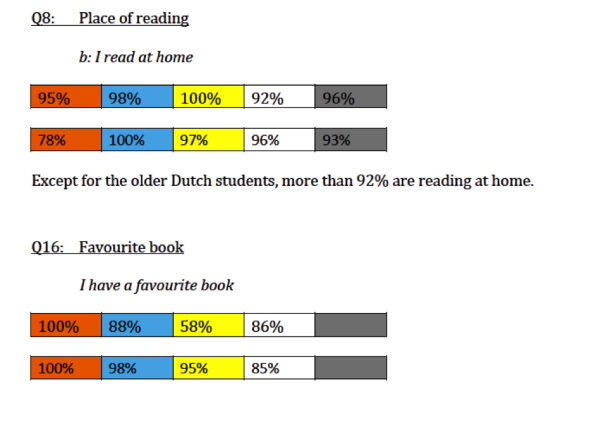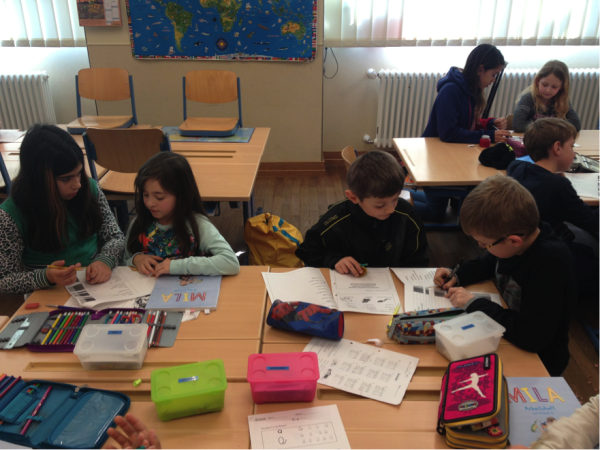Questionnaire
Explanations about the procedure
At the beginning of the project, a working group with at least one member of each partner school developed a questionnaire about the reading habits of the pupils. The idea was to examine the reading habits of the pupils before all the reading and writing activities that were organized during the Comenius project and to find out to which extend these habits had been changed thanks to the project.
Therefore, the pupils had to fill in the questionnaire at the beginning and at the end of the project.
In December 2013, each school asked a certain number of pupils (age ranges from 7 to 9 years and from 10 to 12 years) to fill in the questionnaire. As the first graders were not yet able to read and write at that stage of the school year, these children were helped by the older ones to fill in the requested information.
Each country presented the results of the questionnaires during the next teachers’ meeting.
How the questionnaire looked like
This is the German version of the questionnaire. Question number 18 was added by the end of the project.
Sweden: 3 out of 5 younger pupils have a favourite book. Netherland: All the pupils have a favourite book.
After each country had presented the results of the first questionnaire, we discussed about these results and found out the following conclusions:
- the size of the questioned groups was (extremely) different for every country. In Sweden, for example, the groups were much smaller than in Germany.
- many of the younger pupils had difficulties to understand some questions, because the formulation was quite difficult or unclear.
- some results did not represent the experiences of the pupils. There were for example many children who said that there would not be a library in their school, although they visited it once a week.
- some questions were not clearly formulated, which had as a consequence that they were interpreted differently.
- some of the pupils who were in the younger age range at the beginning of the project were in different classes at the end of the project. They did not do many Comenius activities during the second year of the project. This made it difficult to evaluate the change of their reading habits in the second questionnaire.
- the questionnaire was not developed and evaluated professionally (because of a lack of time and resources)
Second questionnaire
All these reasons brought us to the conclusion that an objective, reliable and valid evaluation was not possible and that we could not compare the results of the countries in the way we planned.
This is why we decided that each country should repeat the questionnaire, but that we would not do an international comparison. Each school drew its conclusions of its own results.
The Albert Wingert School, for example, found out that the pupils preferred reading fairy tales by the end of the Comenius project. This was probably a consequence of the activities that had been organized about the Grimm fairy tales during the Comenius project.
The same school decided to add the favourite books of the pupils in the school library (as a conclusion of the answers to question 17).
